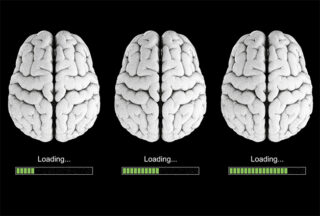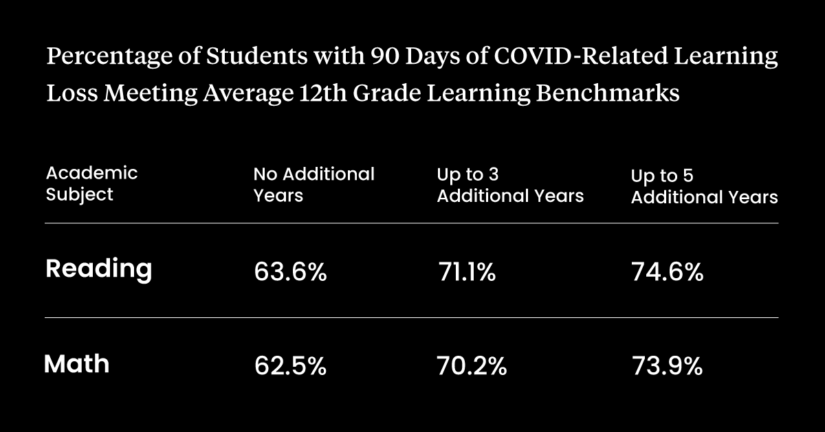The terrible truth: Current solutions to COVID learning loss are doomed to fail
Margaret Raymond | June 1, 2023
Your donation will help us produce journalism like this. Please give today.

Eamonn Fitzmaurice/LA School Report
Most of the programs school districts have implemented to address COVID learning loss are doomed to fail. Despite well-intended and rapid responses, solutions such as tutoring or summer school will miss their goals. Existing policies have failed to consider the unique needs of the students these services seek to help, and thus are destined to waste vast sums of relief funding in pursuit of an impossible goal.
How do we know this? Recent research from our team at the Center for Research on Education Outcomes (CREDO) at Stanford University looked at learning patterns in 16 states to see how recovery efforts will affect students’ academic careers.
Our partnerships with state education departments provide the means to examine the experience of anonymous individual students as they move through public schools. Their scores on standardized state tests reveal what they know at the end of each school year and how that knowledge changes over time. This level of insight is both wide (covering all tested students in each state) and deep (the data illuminate students’ learning histories).
The COVID-19 pandemic has only magnified existing learning disparities. If an average student typically gains a year’s worth of knowledge in a year’s time, then those with greater-than-average learning progress more quickly. Conversely, those who do not learn as much as the average student gain less than what’s expected. Reviewing this data over multiple years yields a picture of the Pace of Learning (POL) for individual students.
The differences in POL are the missing factor in policy decisions about post-COVID efforts.
Our research assumes that the pre-pandemic pace of learning for individual students is the best that can be expected in the post-COVID years. Using longitudinal student data, we calculated each student’s historical POL and, based on those measures, projected outcomes under different learning loss scenarios. Here, we assume students have lost an average of 90 days of learning due to COVID-19, which other research has corroborated. We then considered the effects of additional time, measured in extra years of schooling.
The table below shows the percentage of students across the 16 states who would meet the benchmark of average knowledge in reading and math by the end of their senior year in high school.
Without additional learning time, fewer than two-thirds will attain that level in either subject. But more critically, even many years of additional instruction will yield only a small improvement. Even if schools offer an additional five years of education (assuming students would partake), only about 75% of students will hit that 12th-grade benchmark. One-quarter will remain undereducated.
Of course, these estimates are theoretical: No district in the country is capable of extending the years of schooling they offer by these amounts.

These findings reveal a lot about the future students face. Those who will reach the 12th-grade benchmark on time have POLs that are strong enough to keep them on track. They are not the ones to worry about. It is the students with smaller POLs who require the most attention and support. Currently, for every day of instruction, they gain less than a full day of learning. Even a full year of additional schooling may have little impact for them. Programs of shorter duration are even less likely to produce their desired aims.
Current remedies are insufficient to solve the learning gaps for low-POL students. High-dosage tutoring, for example, consists of four to six hours a week of extra learning time. For average learners, that leads to an increase of about eight percentile points on state achievement tests. But because students with low POLs receive less benefit from every hour or day of instruction offered, they will not progress to the same degree as the average student. At the end of a school year, the total number of hours cannot produce the sustained impacts needed for the low-POL population. Moreover, a large number of studies have found that the benefits from tutoring do not survive into the future for any students. Summer camps offer even less cause for optimism: They provide lower dosages, and for a shorter time.
Ultimately, the accounting does not add up.
Still, against these discouraging findings, there are promising options for addressing learning recovery. One is to allow students to progress at their own pace toward established benchmarks rather than holding everyone to a fixed timeline of learning. Shifting to a mastery-based approach, rather than maintaining the current system of organizing students by grade level, could achieve this. As long as students continue to progress and demonstrate growth, their schooling could continue. High achievers could reach the benchmarks faster than is usually allowed and move on to more advanced goals. Releasing students from the traditional school year would free up resources that could be devoted to helping lower-POL students.
Another option would be to change the pace of learning only for students with slower rates of progress. Children need higher-quality instruction to realize greater learning gains, and the evidence is clear that the best teachers get better results than average educators. Making sure each classroom has excellent instruction should be the ultimate goal.
Ways to find and deploy the most successful educators already exist. exist. By utilizing data from professional observations and student test scores, schools could identify the instructors who truly make a difference in their students’ learning and deploy those high-impact teachers in new ways. One approach would be to offer incentives — bonus pay, for example, or credit that could be put toward a sabbatical or other specialized training — to motivate higher-quality teachers to add students to their classes. Offering extra support to teachers who take on extra tasks, such as class aides or release from other duties, could also help. And placing lower-performing students in classes with a high-quality teacher and higher-performing peers can produce a jump in performance.
In places where the supply of high-need students outstrips the availability of high-impact teachers, an alternative could be to find the best educator in the state for a given subject, who would receive a substantial payment for recording an entire year’s worth of lessons. The videos and all supporting materials — lesson plans, worksheets, quizzes, etc. — would be posted online for other teachers to use.
We call this approach the Instructional Commons. Building on the notion of Massive Open Online Courses, it offers significant benefits: peer-to-peer training, the opportunity for teachers to observe high-quality instruction in depth, a ready resource for their own lesson planning and a common standard for educators and administrators to employ for professional development. If adopted successfully, this approach can elevate the caliber of the existing teacher force at relatively modest cost and without political battles.
The country is at a pivotal moment in K-12 public education. It is time to decide whether we are willing to make the necessary changes to the current system for our students’ future. This will require deep alterations to the existing organization and practice of K-12 public education. The alternative: continued support of an institutional system that will almost certainly fail.
Disclosure: Margaret (Macke) Raymond is a distinguished research fellow at the Hoover Institution, which provides financial support to LA School Report’s parent company The 74.